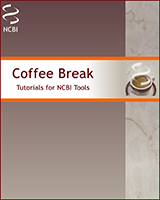NCBI Bookshelf. A service of the National Library of Medicine, National Institutes of Health.
Dean L, McEntyre J, editors. Coffee Break: Tutorials for NCBI Tools [Internet]. Bethesda (MD): National Center for Biotechnology Information (US); 1999-.
Traffic lights regulate the movement of vehicles on roads by transmitting 'stop', 'get ready' and 'go' signals to drivers. Similarly, antigen-presenting cells use cytokines as stop and go signals for lymphocytes. But what's the switch that changes the signal? In the January issue of Nature Immunology, Amy Weinmann and colleagues describe a two-part switch for regulating transcription of a cytokine gene: one signalling pathway leads to chromatin remodelling, and a second, independent pathway activates transcription.
An important element in the initiation of inflammatory responses is the activation of macrophages, resulting in the production of pro-inflammatory cytokines such as interleukin 12 (IL-12), a heterodimeric protein comprising p40 and p35 subunits. Toll-like receptors (TLRs), which are expressed on macrophages, recognize microbial molecules and transmit signals that initiate transcription of cytokine genes; TLR4 recognizes the Gram-negative bacterial product lipopolysaccharide (LPS). TLRs use several signalling pathways, including the nuclear factor κB (NF-κB) and Jun N-terminal kinase pathways, to initiate gene transcription. Which of these pathways stimulates macrophages to produce IL-12?
Using restriction enzyme accessibility assays, Weinmann and colleagues found that TLR4 signalling in response to LPS activation results in nucleosome remodelling at the p40 promoter. Curiously, although active NF-κB is essential for transcription of p40, remodelling was not dependent on NF-κB or another transcription factor, CCAAT enhancer-binding protein β. It seems that other TLR4-inducible factors can stimulate remodelling, perhaps making the p40 promoter more accessible to transcription factors such as NF-κB.
So chromatin remodelling — a previously unrecognized endpoint of TLR signalling — behaves like an amber signal that prepares the chromatin for NF-κB, the green light for transcription of p40. But what is the identity of the protein that recruits the remodelling complex, and what exactly is this complex? Further work in this area should enhance our understanding of TLR signalling and the regulatory mechanisms controlling induction of the inflammatory response.
Story by Elaine Bell, Nature Reviews Molecular Cell Biology
Use BLAST to search for TLR4
Created: March 12, 2001
Click on the link below to start an html tutorial.
Blast the human genome with mouse TLR4
- GeneLocus Links
- Ready, steady, go! - Coffee BreakReady, steady, go! - Coffee Break
Your browsing activity is empty.
Activity recording is turned off.
See more...

